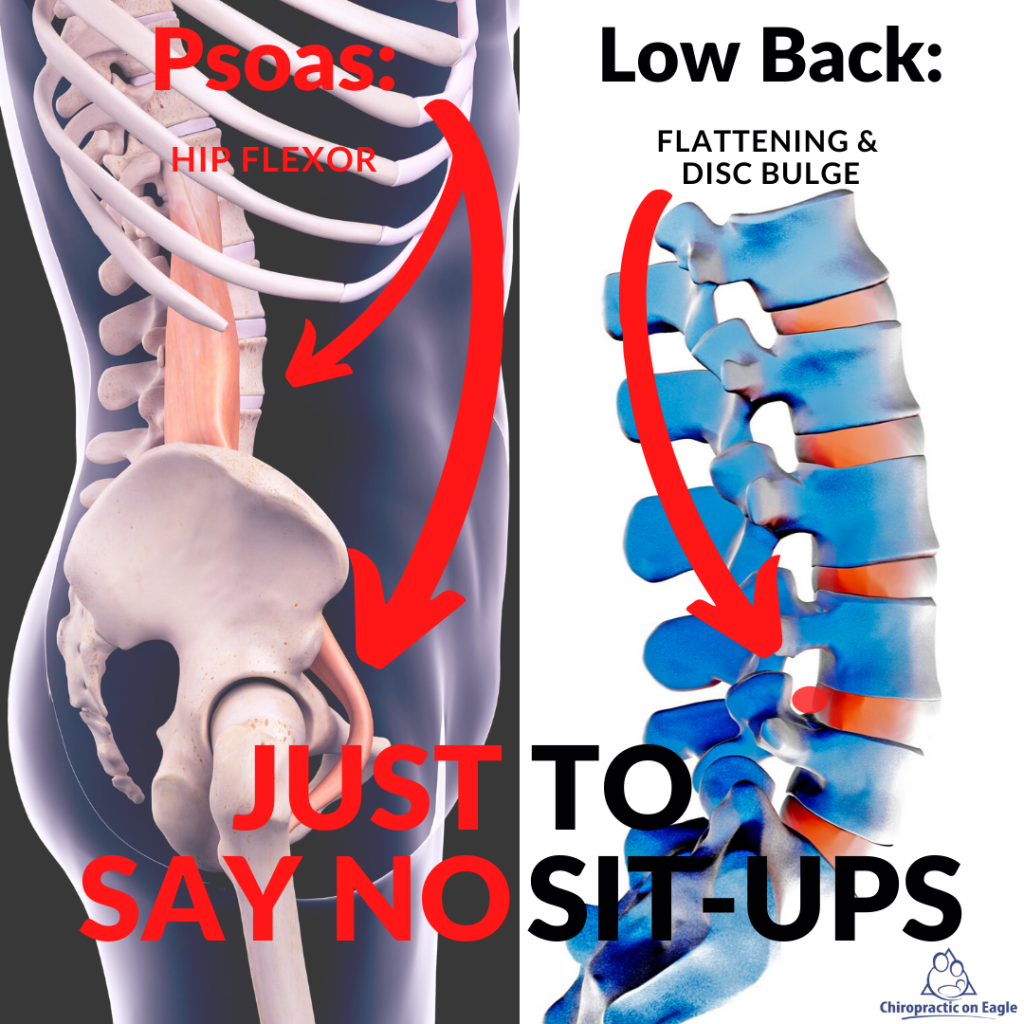Sit-ups Are BAD For You

Sit-ups used to be the gold-standard for working out your ‘abs.’ And for some people they may still be appropriate – think high level athlete, sport-specific training, or cross-fitter. But, for most people they are frankly unnecessary and can cause injury.
Keeping in Balance
Let me explain. Our bodies are meant to move in a balanced way, where muscles work (activate) together. We are designed for balanced, dynamic movement patterns. When these ‘normal’ movement patterns are altered due to muscle imbalances or structural alignment problems, our bodies will compensate with improper movement patterns. This can create a cycle of ‘faulty movement patterns’ that can lead to pain, degenerative conditions, and poor quality of life (think chronic pain).
Sit-ups vs. Planking
Sit-ups isolate certain muscles individually. Take your hip-flexors (psoas muscles) for example. They are the muscles that run in the front of your hips. When you perform a sit-up your psoas muscles do most of the work, especially if you have weak abs to begin with. While most people think sit-ups are working to flatten their stomach (abs), it is the psoas muscles that are actually doing most of the work.
Planks are a much better exercise because the ‘core’ muscles are recruited at the back, sides, and front of the body in better balance. Isolating muscles when exercising is not a good habit to get into unless there is a specific reason for it – rehab, sport-specific training, or if you are a bodybuilder.
Low Back Pain
Over working your hip-flexors can also cause low back pain. The psoas muscles attach from the lower lumbar vertebrae to front of the hip (at the upper leg). When the psoas muscles become too tight, they pull on the low back which can sometimes cause pain (sitting too much can also cause shortening of the psoas muscles that can result in low back pain as well).
In addition, the low back discs can be “micro” damaged over time from the sit-up, as the upper motion of the movement can cause a flattening to the natural curve in the low back, putting excessive pressure through the discs. Disc bulges, herniations, or degenerative disc disease can happen over the long term. No thanks!
Neck Problems
Finally, the neck can take a beating when performing a sit-up as well. Most people place their hands behind their head and as the movement becomes more difficult (due to fatigue), people start to pull on the back of their head forcing their head forward. This causes unnecessary strain in the neck that can cause an injury and contribute to forward head posture (FHP).
What Are the Alternatives to Sit-ups?
We need to change our thinking around sit-ups when there are many better alternatives such as:
Beginner
- McGill curl up
- knee raises (single/double)
- dead-bug
- bird dog/cross-crawl
Advanced
- planks – front/side
- ab roller
- push-ups with pause
- hanging leg raises
Click here to see a video demonstrating the above exercises. Another thing to remember is that some of the best ‘core’ exercises are the compound movements you do every day (either in the gym or day-to-day); squats, standing shoulder press, and dead-lifts to name only a few.
Just Don’t Do Them
Unless you have a good reason to perform sit-ups, don’t do them. The risks outweigh the benefits in my opinion. Stick to the above core exercises and basic compound movements that are better suited to how your body was designed to move. Your body will thank you.
Stay strong,

Chiropractic on Eagle
2:30 – 5:30 PM
2:30 – 6:00 PMTuesday 7:30 – 10:45 AM
2:30 – 5:30 PMWednesday 2:30 – 6:00 PMThursday 7:30 – 10:45 AM
2:30 – 5:30 PMFriday ClosedSaturday ClosedSunday Closed
